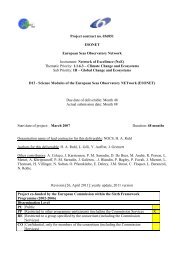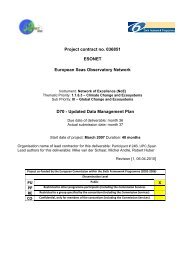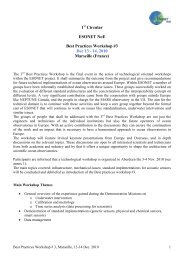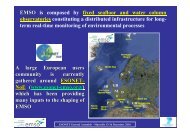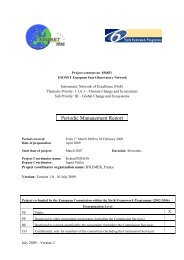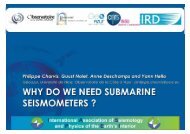Project Deliverable D50 Report on Best Practices ... - ESONET NoE
Project Deliverable D50 Report on Best Practices ... - ESONET NoE
Project Deliverable D50 Report on Best Practices ... - ESONET NoE
Create successful ePaper yourself
Turn your PDF publications into a flip-book with our unique Google optimized e-Paper software.
Is refractive index the soluti<strong>on</strong> to all these problems ?<br />
-Yes… according to the WG127 of the SCOR/IAPSO (Meeting 6-10 May 2007,<br />
Italy):<br />
-‘The refractive index of seawater is the currently most promising parameter to be<br />
measured for this purpose. The resoluti<strong>on</strong> achieved with prototype instruments, the<br />
accuracy of related experimental data and the feasibility of c<strong>on</strong>structing in-situ<br />
optical field sensors support this approach. The refractive index can recognise the<br />
presence of n<strong>on</strong>-dissociated dissolved species like organic silicate which do not<br />
influence the c<strong>on</strong>ductivity of seawater.’<br />
-This document gives the requirements to built refractometers:<br />
-‘The resoluti<strong>on</strong> of refractive index measurements as well as the corresp<strong>on</strong>ding<br />
uncertainties of theoretical formulas are required to be 1 ppm at atmospheric<br />
pressure, and 3 ppm at high pressures…’.<br />
-But, it is written also that, relati<strong>on</strong>s index – S – pressure – Temperature must be<br />
improved.<br />
-And more : it misses a sensor usable in situ.<br />
<str<strong>on</strong>g>Deliverable</str<strong>on</strong>g> #50 - update October 2010 68



